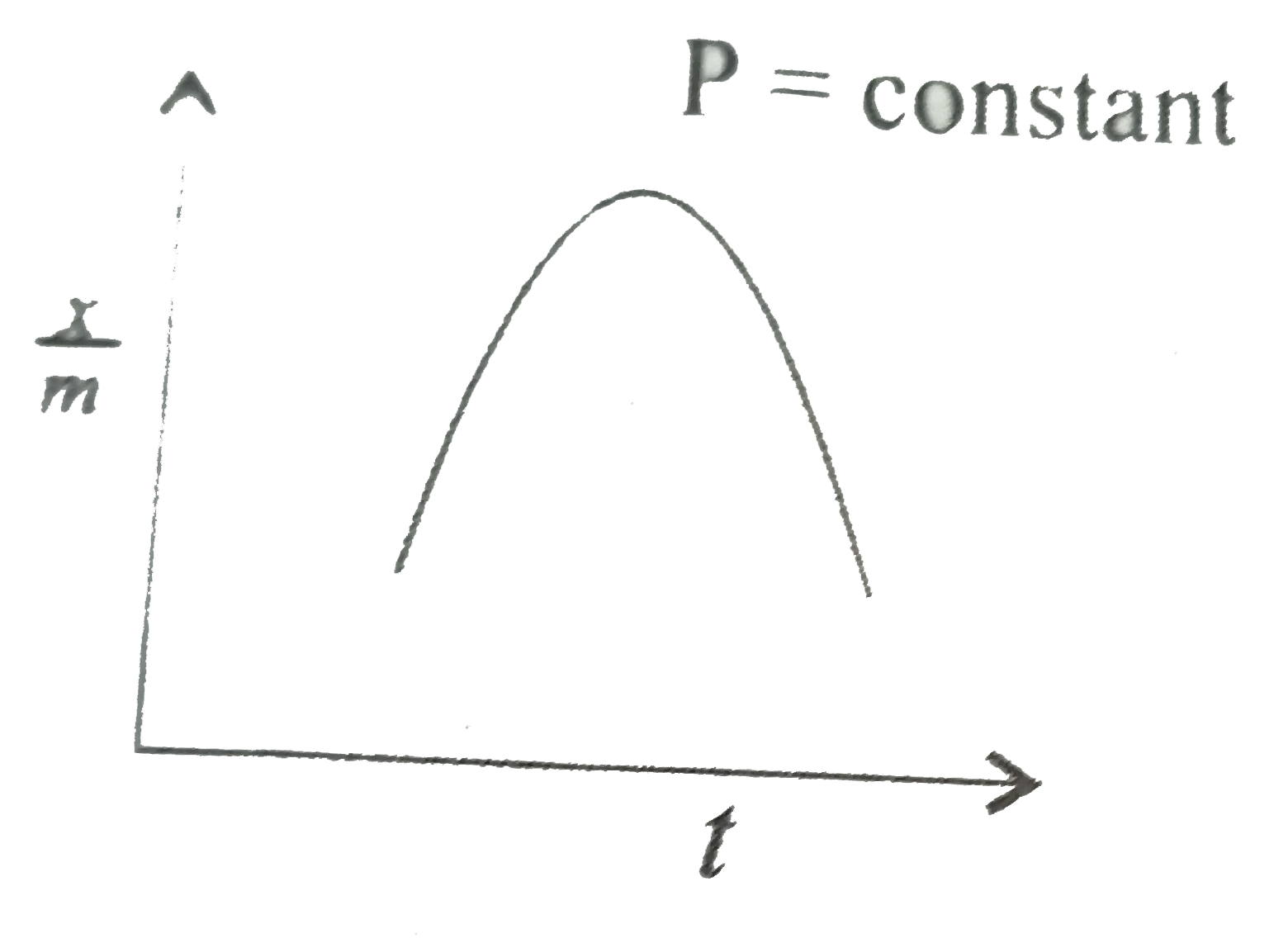In case of chemisorption , why adsorption first increases and then decreases with temperature ?
Text Solution
 The plot of xm vs temperature for chemisorption. There is an increase of extent of adsorptiopn with temperature and then decreases, The initial increases is because of the fact that the heat supplied acts as activation energy required in chemisorption like chemical reacttion.
The plot of xm vs temperature for chemisorption. There is an increase of extent of adsorptiopn with temperature and then decreases, The initial increases is because of the fact that the heat supplied acts as activation energy required in chemisorption like chemical reacttion.
|
Topper's Solved these Questions
- SURFACE CHEMISTRYBOOK - PREMIERS PUBLISHERSCHAPTER - SURFACE CHEMISTRYEXERCISE - OTHER IMPORTANT QUESTIONS & ANSWERS (Choose the correct answer:)
17 Videos
- SURFACE CHEMISTRYBOOK - PREMIERS PUBLISHERSCHAPTER - SURFACE CHEMISTRYEXERCISE - OTHER IMPORTANT QUESTIONS & ANSWERS (II. Answer the following questions:)
57 Videos
- SURFACE CHEMISTRYBOOK - PREMIERS PUBLISHERSCHAPTER - SURFACE CHEMISTRYEXERCISE - OTHER IMPORTANT QUESTIONS & ANSWERS (II. Answer the following questions:)
57 Videos
- SOLID STATE BOOK - PREMIERS PUBLISHERSCHAPTER - SOLID STATE EXERCISE - OTHER IMPORTANT QUESTION &ANSWER ( ANSWER THE FOLLOWING :)
59 Videos
- TRANSITION AND INNER TRANSITION ELEMENTS BOOK - PREMIERS PUBLISHERSCHAPTER - TRANSITION AND INNER TRANSITION ELEMENTS EXERCISE - OTHER IMPORTANT QUESTIONS & ANSWERS (II. Answer the following questions)
114 Videos
Similar Questions
Knowledge Check
Assertion :- In case of chemical adsorption, xm first increase then decrease with temp.
Reason :- The intial increase is due to the fact that heat supplied acts as a activation energy. The decrease afterwards is due to the exothermic nature of adsorption at equilibrium.AIf both Assertion & Reason are True & the Reason is a correct explanation of the Assertion.BIf both Assertion & Reason are True but Reason is not a correct explanation of the Assertion.CIf Assertion is True but the Reason is False.DIf both Assertion & Reason are False.The correct statements pertaining to the adsorption of a gas on a solid surface are
(i) Adsorption is always exothermic
(ii) Physisorption may transform into chemisorption at high temperature
(iii) Physisorption increases with increasing temperature but chemisorotion decrease with increasing temperature
(iv) Chemisorption is more exothermic than physisoption, however, it is very slow due to higher energy of activationA(i),(ii),(iii),(iv)B(ii),(iii),(iv)C(i),(iii)D(ii),(iv)The correct statement(s) pertaining to the adsorption of a gas on a solid surface is(are)
(i) adsorption is always exothermic
(ii) physisorption may transform into chemsisorption transform into chemisorption at high temperature
(iii) physisorption increases with increasing temperature but chemisorption decreases with increasing temperature .
(iv) chemisorption is more exothermic than physisorption , however it is very slow due to higher energy of activation.A(i) and (iv) onlyB(ii) and (iii) onlyC(i),(ii) and (iv) onlyDAll of these.
In the case of chemisorption, why adsorption first increases and then decreases with temperature?
View SolutionAssertion :- In case of chemical adsorption, xm first increase then decrease with temp.
Reason :- The intial increase is due to the fact that heat supplied acts as a activation energy. The decrease afterwards is due to the exothermic nature of adsorption at equilibrium.
View SolutionWhy does physisorption decrease with the increase of temperature ?
View SolutionWhy does physisorption decrease with the increase of temperature ?
View SolutionWhy does conductivity of metallic conductor decrease with an increase in temperature, wheras in case of electrolytic conductors the conductivity increases with an increase in temperature ?
View Solution
